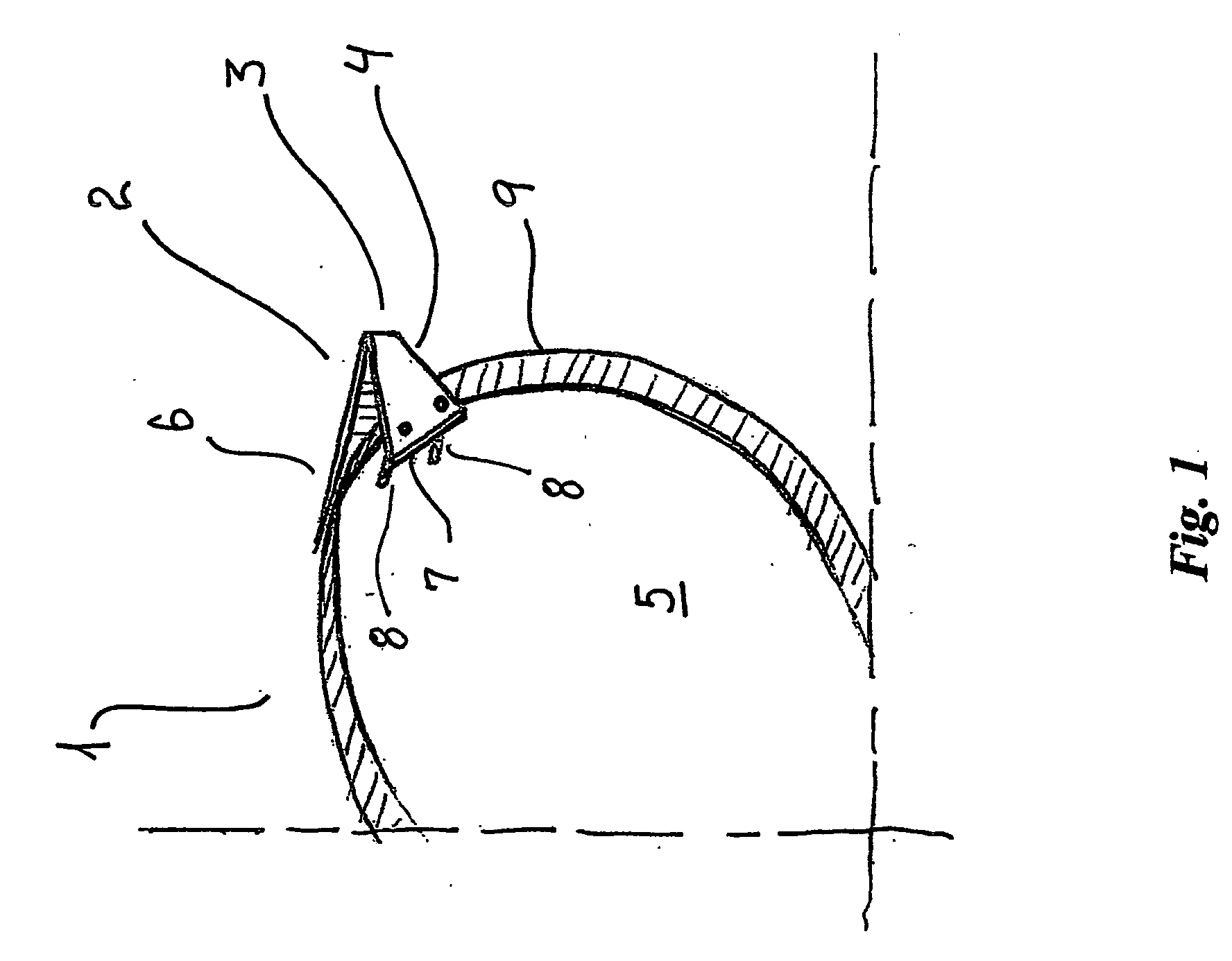Rimless Spectacles And Hinge Pieces For Rimless Spectacles
a technology of rimless spectacles and hinge pieces, which is applied in the direction of optics, lens assemblies, non-optical parts, etc., can solve the problems of reducing the ability of the lens to withstand external forces on the hinge piece, reducing the ability of the lens to withstand external forces, and reducing the limit of the lens material
- Summary
- Abstract
- Description
- Claims
- Application Information
AI Technical Summary
Benefits of technology
Problems solved by technology
Method used
Image
Examples
first embodiment
[0068] a lens 1 with a hinge piece 2 of spectacles according to the present invention is shown in FIG. 1, in which the hinge piece 2 is made from a laser cut or punched out piece of sheet metal that provided with a substantially right angled bent 3 so that an abutment part 4 of the hinge piece 2 is parallel with the front side surface 5 of the lens 1 and a hinge carrying part 6 extending towards the back of a user for connecting with a temple of the spectacles. The inner side surface 7 of the abutment part is in abutment with a part of the front side surface 5 of the lens 1, and two pins 8 are fastened, e.g. soldered, glued or welded to the abutment part 4 so that they extend from the abutment surface 7 of the abutment part 4. The pins 8 are in an interference fit with the two corresponding holding holes though the lens 1, so that the abutment part 4 and the two pins 8 form an unbroken three-sided contact between the hinge piece 2 the lens 1. The distance between the two pins 8 is f...
second embodiment
[0069] a lens 1 with a sheet metal hinge piece 2 of spectacles according to the present invention is shown in FIG. 2. The deviation from the embodiment of FIG. 1 is that the pins 8 are arranged vertically on line.
third embodiment
[0070] a lens 1 with a sheet metal hinge piece 2 of spectacles according to the present invention is shown in FIGS. 3A and 3B. This embodiment deviates from the two shown in FIGS. 1 and 2 in that the pins 8 and the corresponding holding holes 10, 11 are arranged substantially horizontally on line, which in general has been found to be an advantage for spectacles according to the present invention, because the distance from the innermost holding hole 11 to the outer side edge 9 of the lens 1 is maximised and the weakening of the ability of the lens 1 to withstand mechanical stresses is consequently minimised.
[0071] The fourth embodiment shown in FIGS. 4A, 4B and 4C of a lens 1 with a sheet metal hinge piece 2 of spectacles according to the present invention deviates from the third embodiment of FIGS. 3A and 3B in that the lens 1 is provided with an indentation 12 in the front side surface 5 and the surface of the indentation 12 is in abutment with the abutment surface 7 of the hinge ...
PUM
 Login to View More
Login to View More Abstract
Description
Claims
Application Information
 Login to View More
Login to View More - R&D
- Intellectual Property
- Life Sciences
- Materials
- Tech Scout
- Unparalleled Data Quality
- Higher Quality Content
- 60% Fewer Hallucinations
Browse by: Latest US Patents, China's latest patents, Technical Efficacy Thesaurus, Application Domain, Technology Topic, Popular Technical Reports.
© 2025 PatSnap. All rights reserved.Legal|Privacy policy|Modern Slavery Act Transparency Statement|Sitemap|About US| Contact US: help@patsnap.com



